Prices Will Eventually Pullback. After a period of "only rising" market conditions, risk assets declined under the impact of non-farm employment data that was comprehensively below expectations. The overall employment data was weak (unemployment rate increased from 4.117% to 4.248%), once again confirming the trend of a slowing job market. Additionally, the US Bureau of Labor Statistics released the largest two-month employment data downward revision in recent years (excluding the pandemic period) of -258,000.
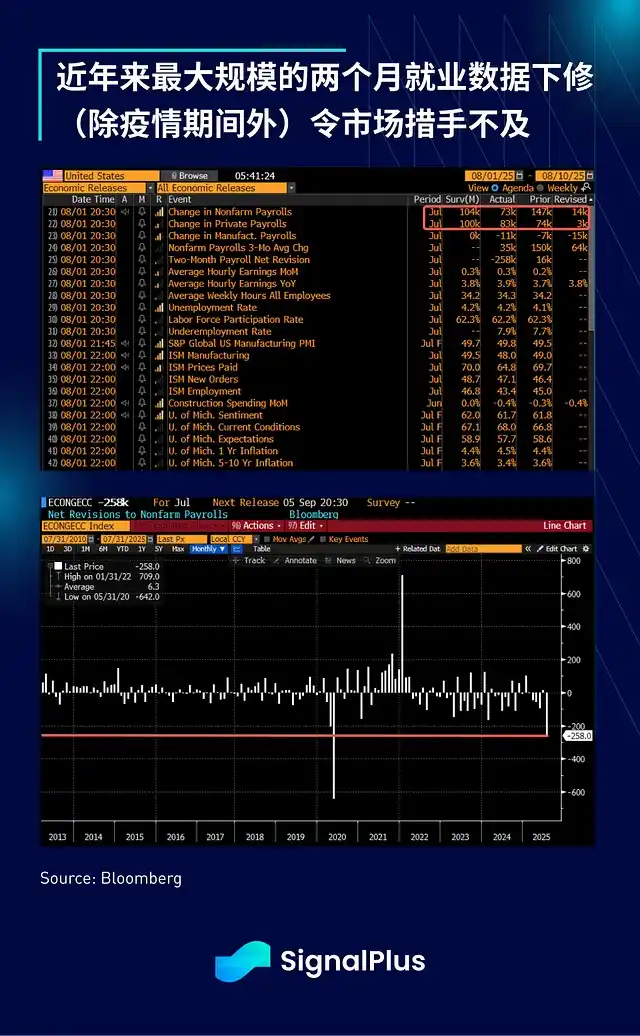
To make matters worse, the ISM Manufacturing Employment Index dropped to its lowest level since the second quarter of 2020, and other leading indicators also suggest that the job market may further deteriorate.
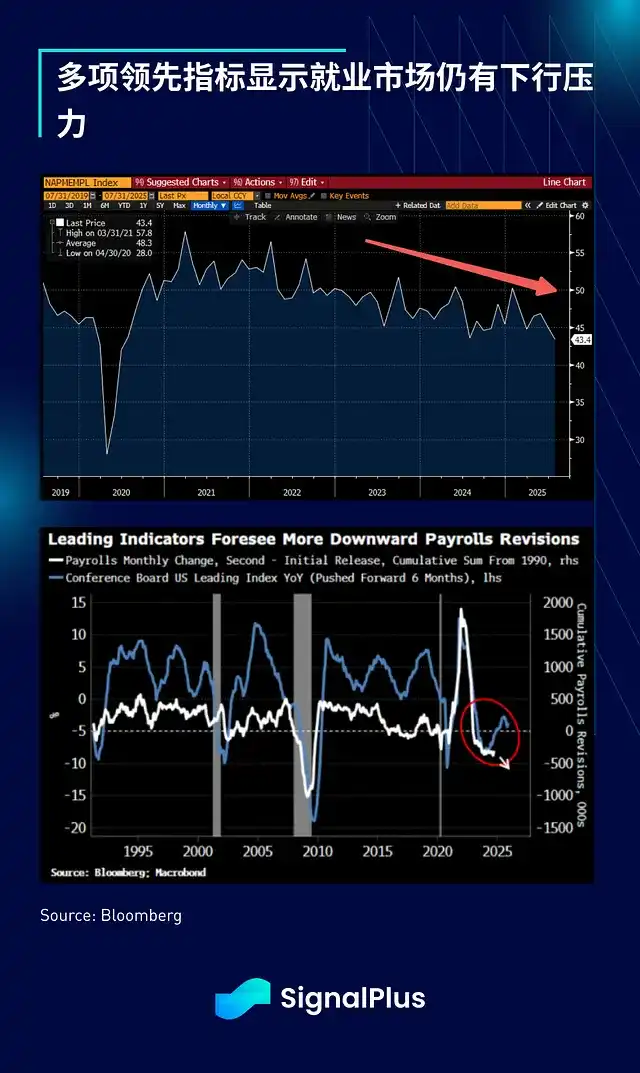
The market reacted quickly and dramatically, with US stocks closing down 2% to 3%, the US dollar falling 2.2% against the yen to 147, and the year-end rate cut expectations in the interest rate market increased by almost 25 basis points compared to the previous day.
The yield change was particularly significant, with the 2-year yield plummeting nearly 30 basis points, one of the largest single-day declines in the past five years. At the end of last week, the market's rate cut expectations for this year rose to about 60 basis points, up from around 35 basis points the day before, which prompted President Trump to fiercely criticize Federal Reserve Chairman Powell for not cutting rates in time and criticize the "inaccurate" employment data published by the US Bureau of Labor Statistics.
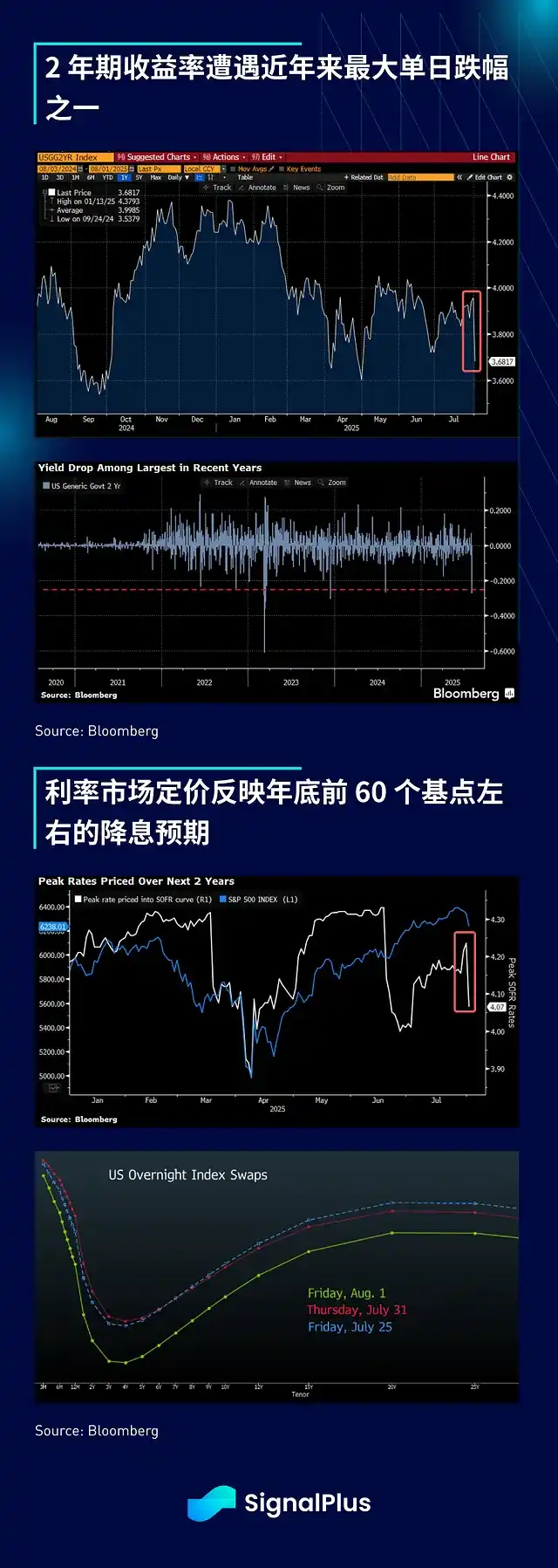
"We need accurate employment data... The current data is done by people appointed by the Biden administration."
"In my view, the current employment data has been manipulated with the purpose of embarrassing the Republican Party and me." - President Trump
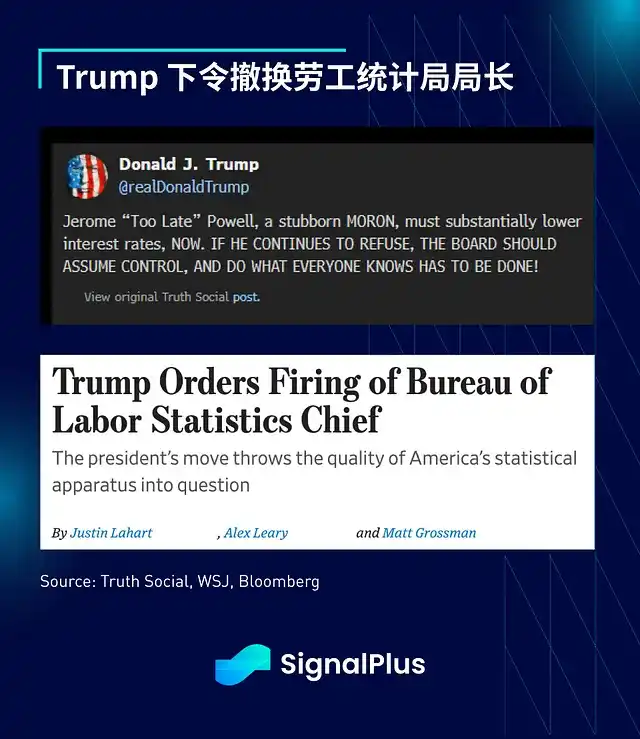
The market's dramatic reaction last Friday also overshadowed the recent hawkish Fed meeting. Powell emphasized that the Federal Reserve has been trying to address commodity inflation by maintaining interest rates. Meanwhile, with the resignation of Fed Governor Kugler, President Trump may nominate a new candidate in the short term, and pressure on the Federal Reserve will only further escalate.

Regarding policy impact, President Trump also postponed the implementation of a new round of tariffs from the originally scheduled August 1st to August 7th, paving the way for intensive negotiations this week. The focus of negotiations will be on Switzerland (with tariffs as high as 39%), Taiwan, Canada, and Brazil, while the market will continue to pay attention to the escalation of the Russia-Ukraine situation and the subsequent developments of US submarine deployments.
Despite various opinions and mockery about tariff negotiations, US income in July indeed reached a record $150 billion, and the previous month also achieved a surplus of $27 billion, significantly reversing the $71 billion deficit from a year ago. Moreover, with the return of the "US exceptionalism" narrative, market demand for US assets has rebounded sharply since May, and any concerns about capital outflows have vanished.
The US dollar subsequently rebounded, with the dollar index rising more than 3% from recent lows, while safe-haven assets like gold began to weaken.
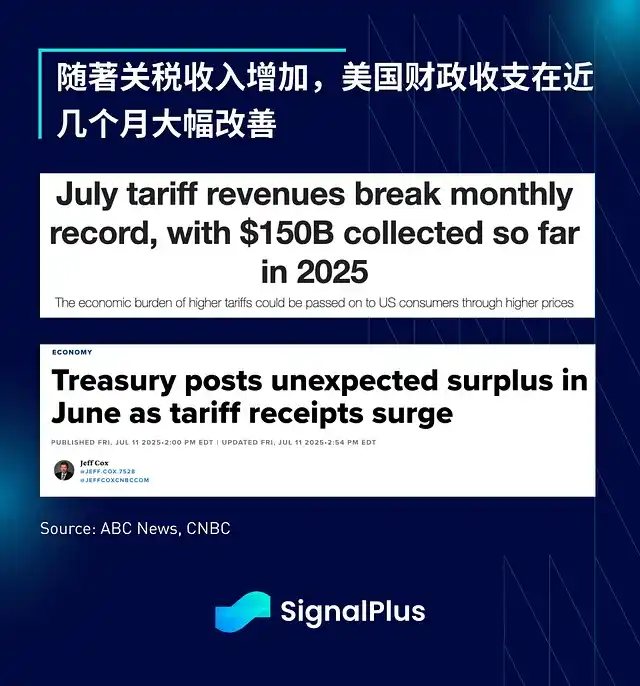

In terms of the stock market, the earnings season has performed well so far. Visa, Mastercard, and Amex all reported robust growth in payment volume and consumer momentum, and bank earnings were largely in line with expectations. In the tech sector, consumers continue to show resilience in goods and transportation, with Meta and Microsoft delivering excellent profit performance, but ultimately dragged down by disappointing earnings from Amazon and Coinbase.
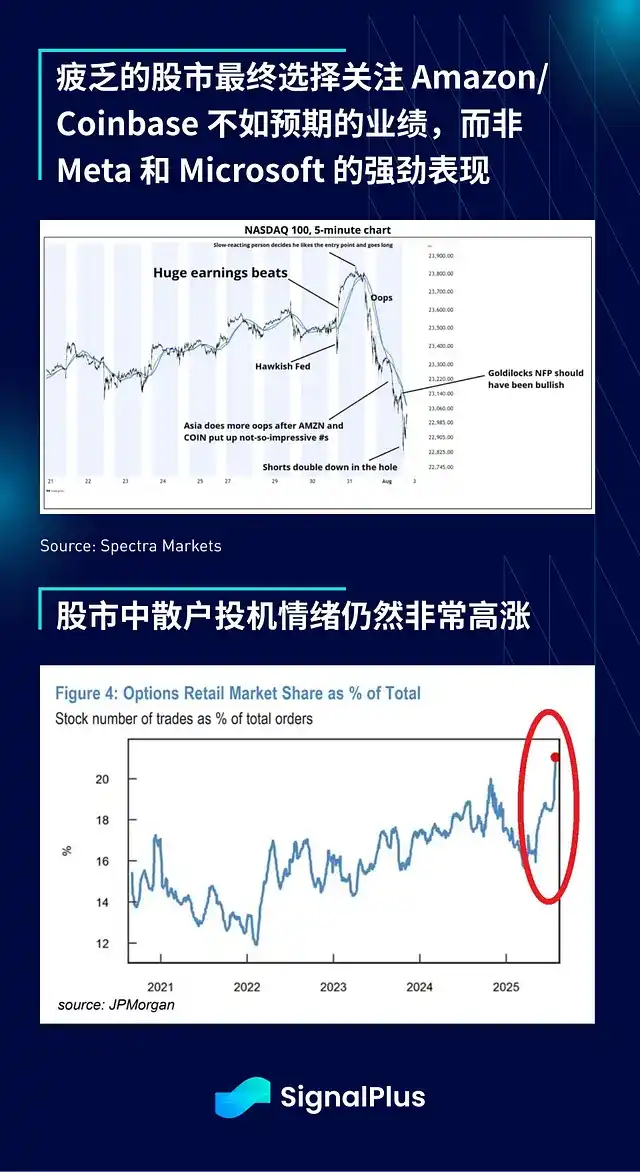
Lastly, in the cryptocurrency space, Coinbase's revenue grew 3.3% year-on-year to $1.5 billion but fell short of analyst expectations and was lower than the $2 billion in the first quarter of 2025. Net profit was boosted by unrealized gains from cryptocurrency and Circle holdings, but global and US spot trading volumes were generally weak in the second quarter.
Coinbase's stock price has fallen 25% from its July high, and as overall market sentiment weakens, BTC price dropped to $112,000, with over $1 billion in long futures liquidated last Friday, the most brutal since May.
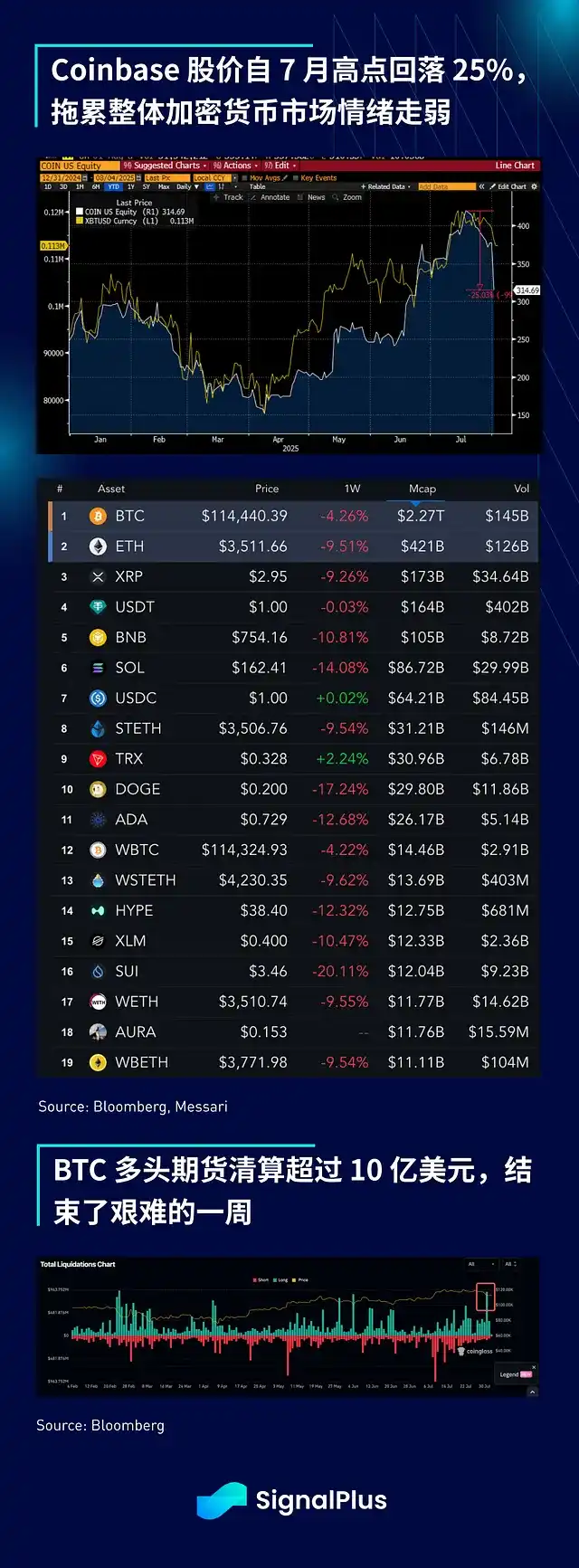
As expected, BTC and ETH both experienced significant capital outflows last week. BTC saw a $1 billion outflow on Thursday/Friday, one of the worst single-day performances this year, while ETH ended nearly a month of consecutive net inflows, with $152 million flowing out last Friday.

Overall, given the speed and scale of capital outflows, market performance is actually more stable than expected, which is related to the significant improvement in market depth for BTC and Altcoins. With institutional funds and professional investors joining, secondary market liquidity has improved, avoiding the kind of violent sell-off before the ETF launch.
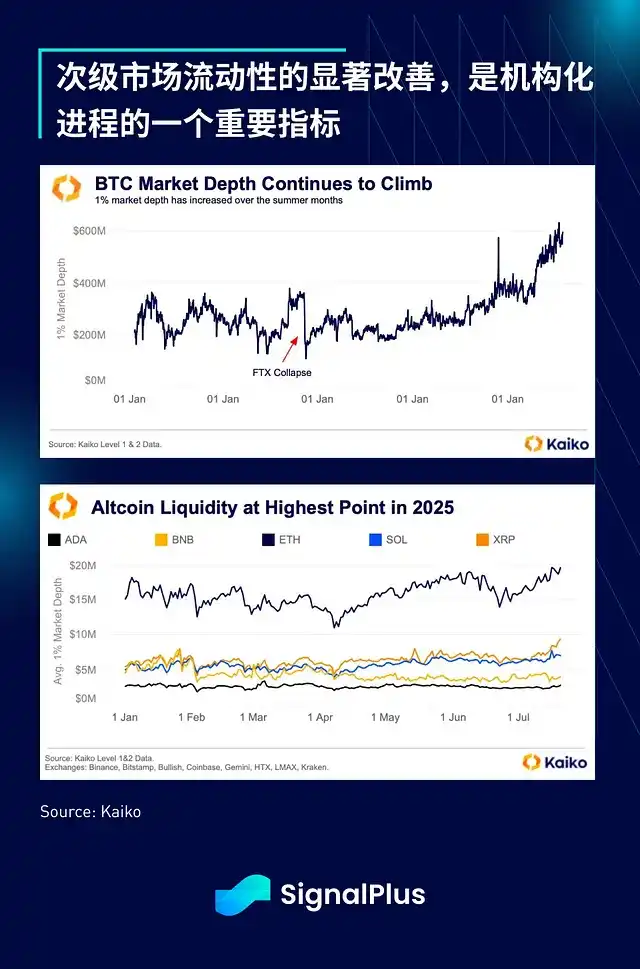
Looking ahead, the market is currently at a delicate point, with both bulls and bears expected to be in a tug-of-war, and it will be difficult to determine a winner in the short term. The bullish camp believes the market has overreacted to the non-farm employment data, while the bearish side will point out that this could be an initial signal of market reversal given the overheated market in the past three months. Continuous tariff news and increasingly aggressive Trump rhetoric will inevitably further amplify market noise, and as summer enters its latter stage, overall trading activity decreases, which may further magnify market volatility.
We expect no clear directional breakthrough in the short term, and this month's price trend will be more volatile compared to July. The fourth quarter will be crucial, when the Federal Reserve will fully resume operations, and the combined effects of tariffs and inflation will begin to impact the real economy. In this context, we believe now is an opportune time to moderately reduce risk exposure to prepare for the busy September and year-end. Wish everyone smooth operations and enjoyable trading!





